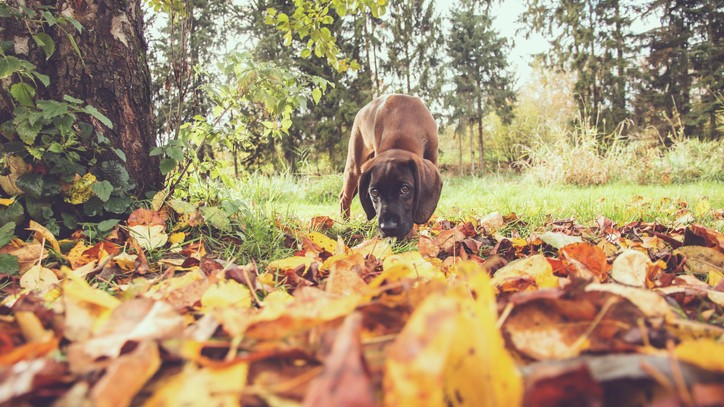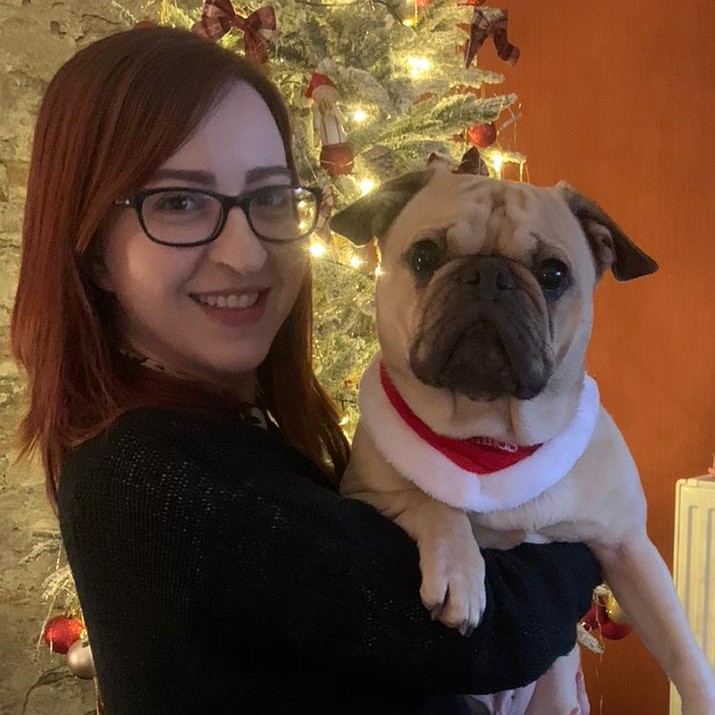Do you know why you should let your dog sniff on a walk?
Many dog owners don’t realise why it’s so important to let their dog sniff on a walk. Find out more here...

Walkies aren’t purely about exercise and going to the bathroom: letting your dog sniff on a walk and allowing them to fully engage their sense of smell is mentally stimulating and crucial for maintaining a happy and healthy dog.
It may seem frustrating at times that all your dog wants to do is sniff and sniff and sniff some more but, strange as it may seem, dogs actually see the world through their noses.
But don’t feel bad if you’ve not let your dog sniff all that much when you’re out on your walks. It’s a common response from pet owners to tug on their lead or tell their dog to hurry up thinking that they are wasting time. However, once you understand just how important it is for your dog to sniff you’ll be enjoying walks together even more than you already do. So read these tips to find out more.
- 10 tips for running with your dog
- How to stop dog aggression
- The science behind positive reinforcement for dogs
Dogs and their noses
As a result of the approximately 300 million scent receptors canines possess – in comparison, we humans have five to six million – paired with their ability to decode smells using a dedicated part of their brain that is 40 times greater than ours, dogs can understand scent beyond our comprehension.
Mind-blowingly, this means that (dependent on the breed) a dog’s sense of smell is between 10,000 and 100,000 times greater than ours!
That’s why these super sniffers can be trained to detect bombs, find people and endangered animals, and even certain medical diseases such as cancer.
Why is it important for dogs to sniff?
Dogs don’t just sniff things to find out whether they smell nice. Pooches sniff as a way of establishing their environment.
Get the best advice, tips and top tech for your beloved Pets
This includes picking up the unique scents left behind by other creatures that have been on the same route or in the nearby area, as well as helping them to figure out if any elements of their walking route have changed, such as the weather, or the passing of time.
For example, in the canine world, urinating is more than just needing a wee – it’s all about communication. You may have witnessed your dog relieving themselves in the same place they’ve just seen another canine urinate. This is a way of letting other dogs know that they were there. After all, dogs get important information from sniffing another’s urine such as age, gender, and health.
Ensuring that sniffing (to an extent) is part of your pooches daily routine will not only help them establish their environment, but will also work to lower stress levels. This is especially true when it comes to worried reactive dogs, since sniffing can reinforce feelings of security.

How to activate their senses
The best way to engage your dog’s sense of smell is on a ‘scent walk’ or ‘smell walk’ at least once a week.
This is where the aim of the walk shifts from completing a certain number of miles and going for a bathroom break, to focussing on how many odours have been detected.
A scent walk has no predetermined route, destination, or time. Instead, let your dog follow their nose, meandering as they process all of the different smells along the route.
Top tips for the best 'smell walks'
- You should be fully engaged – Your dog will benefit more from their scent walk if you’re engaged, too. That means that all distractions, such as music and phones, are out of sight and your full attention is on your pooch.
- Use a harness and long lead – By using a long lead, you can grant your dog enough freedom to spend the first five minutes (at least) of their walk sniffing and establishing their environment without going too far or having to pull to reach where they want to smell.
- Patience is key – It may be a challenge at first but it’s important to remain patient whilst your dog is sniffing. You’ll soon be rewarded by the sight of how happy using their nose with freedom will be making them.
- Not every walk is a scent walk – We all know that life can be busy and ‘scent walks’ take time. Teach your pooch the difference between their usual walks for exercise, the late night toilet trips, group walks with other canines, and scent walks. This could include teaching them cues, such as “leave it” or “watch me,” so that their focus and attention shifts back to you.
- Don’t forget leash manners and dog walking etiquette – We’ve learnt that ‘scent walks’ are incredibly important but, at the same time, you’ve got to be careful to stick to good behaviour and make sure that you don’t let your dog drag you around in their attempt to give absolutely everything a sniff.
You might also be questioning, 'Why does my dog walk sideways?'
Chloe is a freelance writer, editor, and proofreader, who has more than ten years’ experience in creating animal-focussed content. From National Geographic to Animal Planet, Chloe’s passion for creating fact-filled features all about wildlife and the environment is evident. But it’s not just wild animals that Chloe’s fascinated by. Having written more than 75 articles for PetsRadar - and having her very own four-legged friend by her side - it’s no wonder that her love of dogs (and, of course, cats) has grown exponentially.
Her website, www.chloemaywrites.com, and social media pages - @ChloeMayWrites on Instagram, Facebook, and Twitter - showcase her knowledge through daily facts and trivia tidbits. For example, did you know that snails have teeth?!

